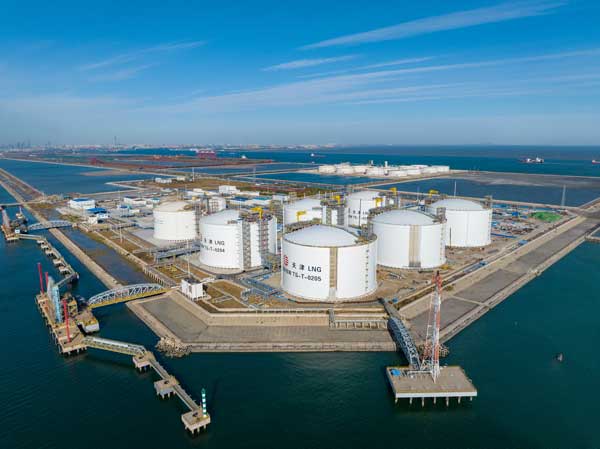Why Should We Pay Attention to LNG Dual-Fuel Ships?
Energy Transition Driven by Environmental Regulations
Since 2020, the International Maritime Organization (IMO) has enforced the “IMO 2020” sulfur cap regulation, reducing the global sulfur content limit in marine fuels from 3.5% to 0.5%. In Emission Control Areas (ECAs), the limit is even stricter—down to 0.1%.
Furthermore, IMO’s “Greenhouse Gas (GHG) Reduction Strategy” aims to cut total GHG emissions from shipping by at least 50% by 2050 compared to 2008 levels.
These stringent environmental regulations are pushing the global maritime industry to seek cleaner and more sustainable fuel alternatives. Liquefied Natural Gas (LNG), due to its lower emissions and well-developed technology, has emerged as a preferred transitional fuel.

Hebei Haihao Group
What Is an LNG Dual-Fuel Ship?
An LNG dual-fuel ship is a commercial or work vessel equipped with a dual-fuel engine system that can operate on either LNG or conventional marine fuel, depending on operational needs.
The key feature of such ships is fuel flexibility: they can run on clean LNG in ports or emission-controlled zones to reduce environmental impact and switch to diesel in areas where LNG refueling is not readily available, such as during long ocean voyages.
Core components include:
Dual-fuel engines (e.g., ME-GI or X-DF);
LNG storage tanks and cryogenic supply systems;
Control and safety systems (fuel switching, gas detection, auto regulation, etc.);
Sometimes, a Boil-Off Gas (BOG) recovery system to improve fuel efficiency by reusing evaporated gas.
Key Advantages of LNG Dual-Fuel Ships
Environmental Compliance: Meets IMO and ECA emission standards;
Cost Optimization: Fuel flexibility allows for better economic efficiency;
Operational Freedom: Can sail freely in emission-restricted regions;
Corporate Image: Supports green transition and enhances reputation among cargo owners.

Tianjin LNG
Applications of LNG Dual-Fuel Ships
LNG dual-fuel technology has been widely adopted across major vessel types, including but not limited to:
Container ships (e.g., CMA CGM’s “green vessel” fleet);
Car carriers (e.g., Wallenius Wilhelmsen, SITC using LNG propulsion);
Product and chemical tankers;
RoPax ferries (where low port emissions are critical);
Offshore support vessels (e.g., LNG-powered Platform Supply Vessels, PSVs).
Haihao Group’s Marine Capabilities
Haihao Group holds certifications from major classification societies including ABS, DNV, BV, RINA, and RS. We actively participate in large-scale marine piping system projects and maintain strategic partnerships with leading domestic shipyards. If you have a related project and require high-quality piping products, feel free to contact us at any time. Email:sales@haihaogroup.com

